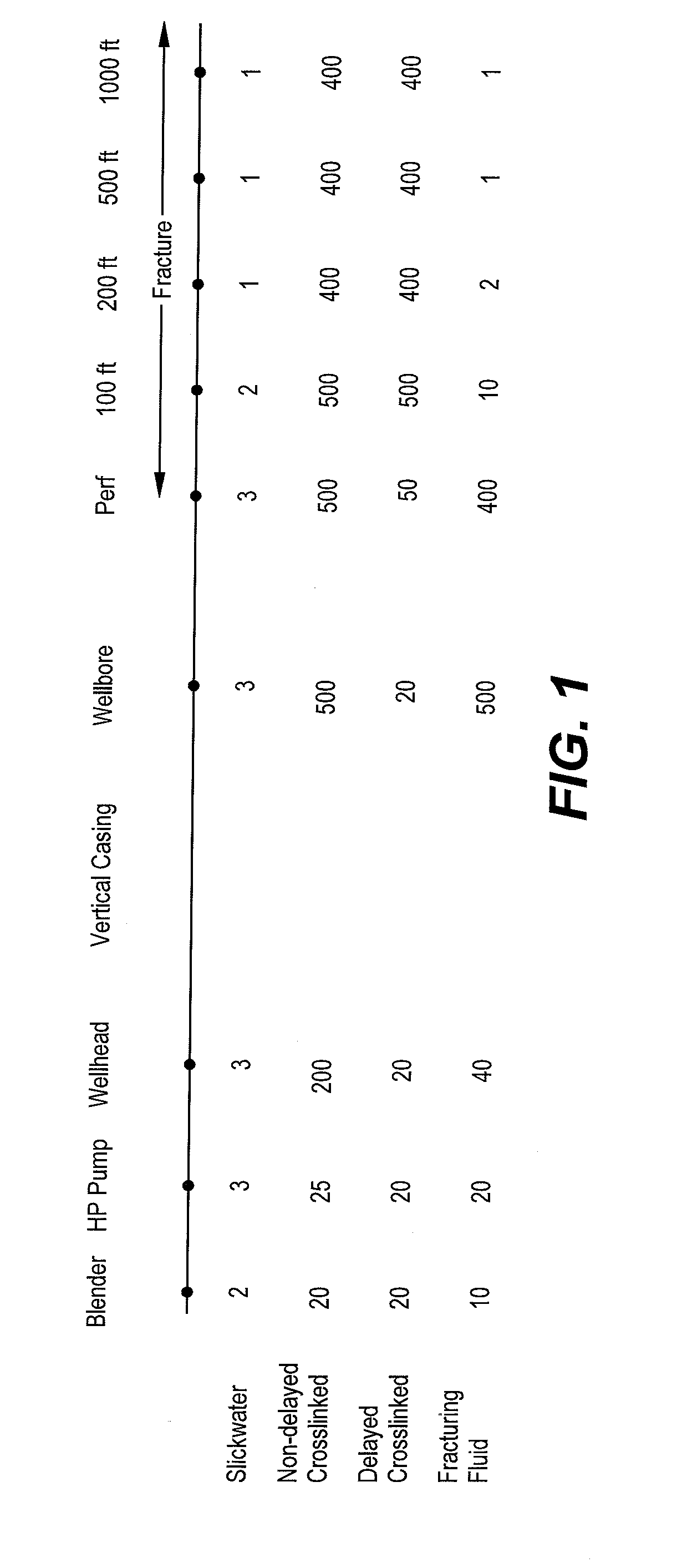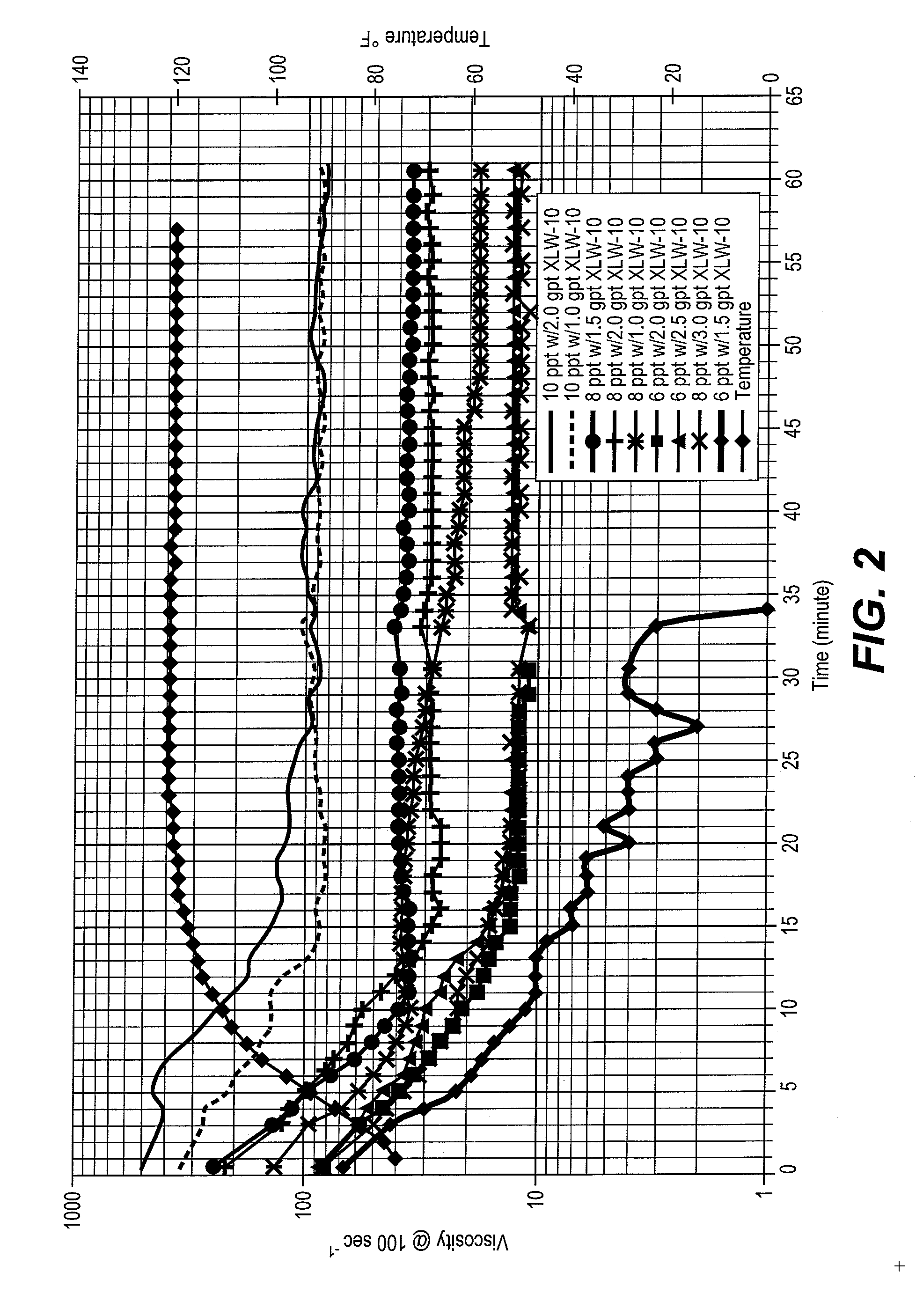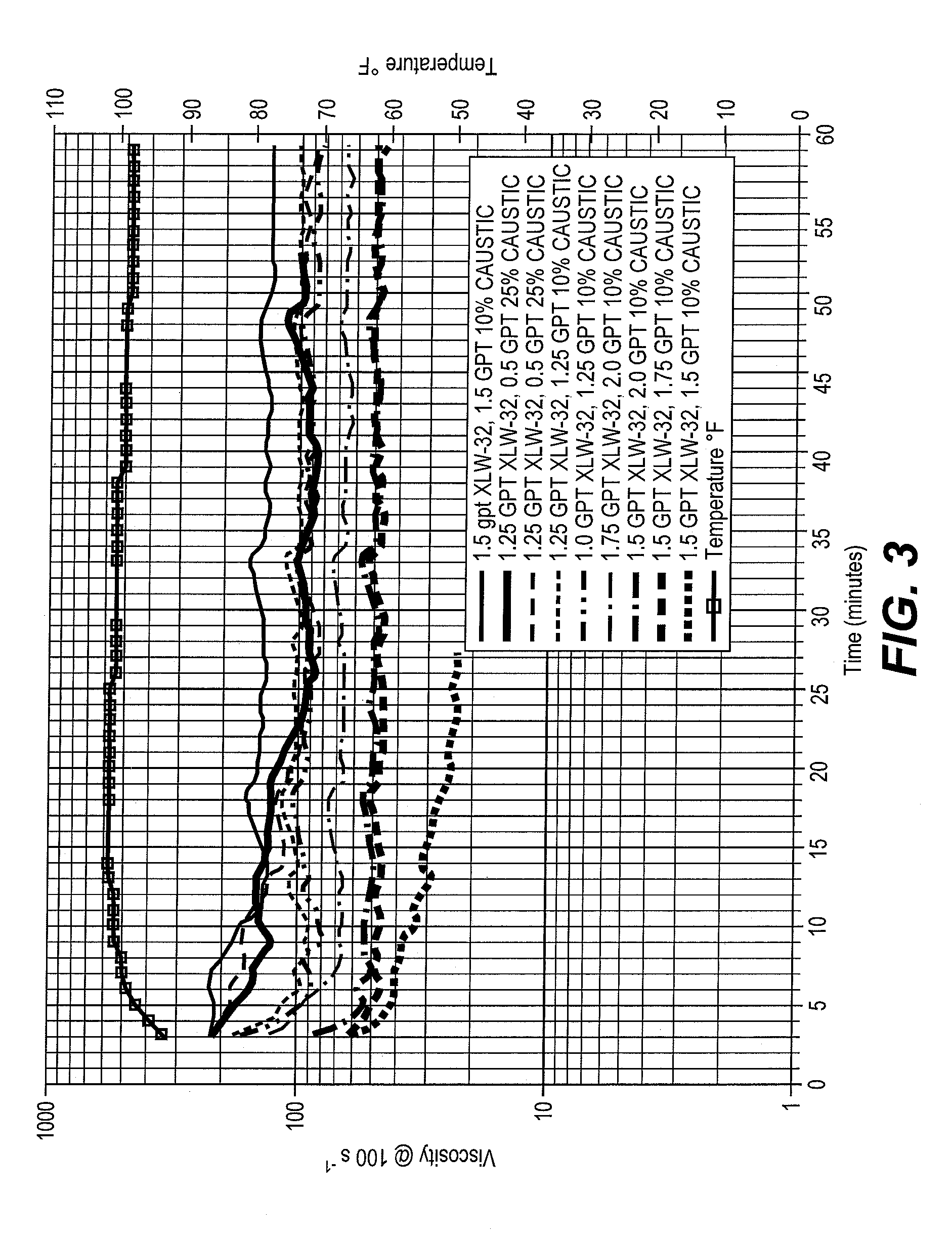Method of fracturing subterranean formations with crosslinked fluid
- Summary
- Abstract
- Description
- Claims
- Application Information
AI Technical Summary
Benefits of technology
Problems solved by technology
Method used
Image
Examples
example 1
A fluid was formulated by mixing at room temperature in a blender underivatized guar having an intrinsic viscosity greater than 16 dL / g, commercially available from BJ Services Company as GW-2, a borate crosslinker, commercially available from BJ Services Company as XLW-10. The loading of the polymer in the fluid varied to be between 6 and 10 pptg (pounds per thousand gallons). The amount of crosslinker in the fluid was varied to be between 1.0 and 3.0 gptg (gallons per thousand gallons). The fluid was buffered to a pH of 9.0. About 30 ml of the fluid was then placed into a Fann 50 viscometer cup having a bob (BX5) and rotor (R1) cup assembly. The cup was then placed on a Fann 50 viscometer. The sample was sheared by a rate sweep of 100 sec−1 for about 1 minute. FIG. 2 shows the results wherein 10 pptg of the fluid with 1 and 2 gptg XLW-10 had initial viscosities of 500 cP and 350 cP, respectively, declining after 5 minutes to about 400 cP and 200 cP, respectively, and after 10 minu...
example 2
A fluid was formulated by adding GW-2 to water in a blender at room temperature and then adding to the fluid a borate crosslinker, commercially available from BJ Services Company as XLW-32. A 10% caustic solution (sodium hydroxide) was then added until pH of the fluid was about 9 and the crosslinked fluid formed in approximately 5 seconds. The loading of the polymer in the fluid was between from 0.5 gptg to 2.0 gptg. The amount of crosslinker in the fluid was varied to be between 1.25 gptg and 1.75 gptg. About 30 ml of a 10 pptg fluid was then placed into a Fann 50 viscometer cup having a bob (BX5) and rotor (R1) cup assembly. The cup was then placed on a Fann 50 viscometer. The sample was sheared by a rate sweep of 100 sec−1 for about 1 minute. The stresses associated to each rate were used to calculate the power law indices n and K; n refers to flow behavior index and K refers to consistency index set forth in the American Petroleum Institute's Bulletin RP-39. The fluid viscosity ...
example 3
A fluid was formulated by mixing at a temperature range of from 75° F. to 150° F. in a blender water, from 2.0 to 3.0 underivatized guar having an intrinsic viscosity greater than 16 dL / g, commercially available from BJ Services Company as GW-2LDF and 3 gpt of a self-buffering borate crosslinker, commercially available from TBC-Brinadd as NP BXL 0.2. The pH of the fluid was buffered to 9.0. About 30 ml of the fluid was then placed into a Fann 50 viscometer cup having a bob (BX5) and rotor (R1) cup assembly. The cup was then placed on a Fann 50 viscometer. The sample was subjected to a shear rate of 511 sec−1. FIG. 4 shows the viscosity profiles of fluids having 8, 10 and 12 pptg. As illustrated, the crosslinked fluid viscosities of each of the example formulations were reduced by 40% to 60% due to increasing the fluid temperature from 75° F. to 150° F.
PUM
 Login to View More
Login to View More Abstract
Description
Claims
Application Information
 Login to View More
Login to View More - R&D
- Intellectual Property
- Life Sciences
- Materials
- Tech Scout
- Unparalleled Data Quality
- Higher Quality Content
- 60% Fewer Hallucinations
Browse by: Latest US Patents, China's latest patents, Technical Efficacy Thesaurus, Application Domain, Technology Topic, Popular Technical Reports.
© 2025 PatSnap. All rights reserved.Legal|Privacy policy|Modern Slavery Act Transparency Statement|Sitemap|About US| Contact US: help@patsnap.com



